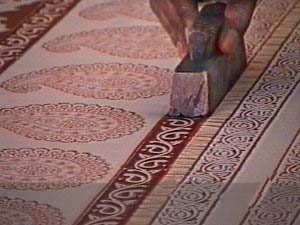Remember when you see a dress and identify it with the traditional flower-ish design? Let’s talk about it today
Introduction to Block Printing
Hand block printing is a centuries-old Indian art form that utilizes a hand-carved teak wood block that is dipped in dye and stamped by hand onto cotton or silk. These designs are mostly inspired by the traditional Indian motifs.
The Process of Block Printing
This form of cloth printing is very famous and are mostly used in Indian style of clothing like saree. One place where this art is more popular is a small village, 32km away from Jaipur with a population mostly comprising of Chhipa and Ranger community. These people are involved in this craft for centuries. This village is also recognised internationally for their Pickles.

The floral designs that are mostly associated with this art are the main speciality of this kind of paintings. They are known as ‘Boots’ in which only one type of flower-petal and bud creations is found. But this is not limited to just that. It also has different design patterns like Peacock, elephants, human and is mostly used on curtains, bedcovers, table clothes etc.
The Benefits of Block Printing
Most craftsmen from Bagru still rely on the natural colours that they can extract from the vegetables, fruits or any other natural sources. In a world that moving towards synthetic colours and with people wanting to move to eco-friendly technologies, they serve a great example. The motif is traced onto a block by a master craftsman who then chips away at the block to create a stamp.
The process starts with the clothes being pre-washing the fabrics in the river to reduce water consumption. Once, done, it is then dyed by fixing it on the table with pins. This is then put into the dye and stamped.
The process ends with washing again in river and drying in sun to reduce energy consumption. This is a classic example of an eco-friendly yet great method to design clothes.

The popularity of this art form can be taken from the fact that Calico Museum of Textile in Ahmedabad, India, has commissioned a study into this old art form. But, sadly, the Bagru people are still deprived of basic facilities like proper education, electricity etc. And all this has still not broken them to leave this as they are still keeping the art alive to its fullest.



